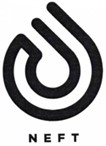- Bar A, the owner of the NEFT mark, claimed that Bar B engaged in unfair competition due to its use of NEFT designations.
- The authority found that the trademark and the designations were not similar to the extent of creating confusion.
- The parties did not qualify as competitors as they carried out their activities within different geographic areas.
Background
The trademark depicted below is implicitly understood as the PETROLEUM trademark:

The word ‘neft’ (if transliterated into Cyrillic characters) may be translated as ‘petroleum’ in English.
The dispute involved two Belarusian bars – Bar A and Bar B – offering services under the mark NEFT. Bar A owned a trademark registration for the mark above, while Bar B did not own a trademark registration. The dispute was triggered by Bar B’ use of designations similar (in Bar A’s opinion) to the NEFT trademark:


Designations used by Bar B
Bar A’s trademark has been registered since 2020. Subsequently, Bar A discovered that Bar B was using the designations depicted above on outdoor and indoor signages, menus and social networks, among other things. In August 2022 Bar A applied to the anti-monopoly authority, claiming unfair competition.
Decision
In its decision dated 14 March 2023, the anti-monopoly authority did not ~nd that there had been unfair competition or other violations of the anti-monopoly law during the course of the investigation. The reasoning was based on the following grounds.
1. The trademark and the designations were not similar to the extent of confusion
The anti-monopoly authority considered that Bar A’s trademark and Bar B’s designations were graphically and visually distinguishable. A potential customer could visually differentiate between them. This ~nding was also con~rmed by specially engaged experts. The experts established, among other things, that Bar A’s trademark and Bar B’s designations used different ~gurative styles and had different degrees of graphic complexity. The fonts used belonged to the group of common fonts that are public and do not have unique characteristics.
2. Bar A and Bar B do not qualify as competitors
According to the anti-monopoly authority, the parties carried out their restaurant businesses within different geographic market boundaries: Bar A operated only in the capital of Belarus (Minsk), while Bar B operated only in the peripheral town of Rechitsa.
3. Customers were not likely to be confused by Bar B’s designations
The anti-monopoly authority determined that potential customers, when entering each bar, had a clear idea of the place that they visited due to the visual distinctiveness of the bars.
As to food delivery services, Bar A used a service delivering food only in Minsk, while Bar B used another service delivering food only in Rechitsa.
Finally, the customer comment books (which are available for state inspections) of Bar A and Bar B did not contain any complaints relating to confusion between Bar A’s trademark and Bar B’s designations. The residential geography of visitors was mostly limited to the cities in which the bars were located.
4. Bar B did not gain advantages in entrepreneurial activities
The anti-monopoly authority established that Bar B could not acquire any advantages in its entrepreneurial activities, including the elimination of Bar A from the market. The reason was that the designations used by Bar B could not mislead customers into believing that Bar B belonged to Bar A.
5. There was no loss of, or damage to, business reputation
The anti-monopoly authority concluded that there was no reason to believe that there was at least a possibility of redistributing consumer demand in favour of Bar B as a result of using the designations at issue.
This article first appeared on WTR Daily, part of World Trademark Review, in May. For further information, please go to www.worldtrademarkreview.com.


